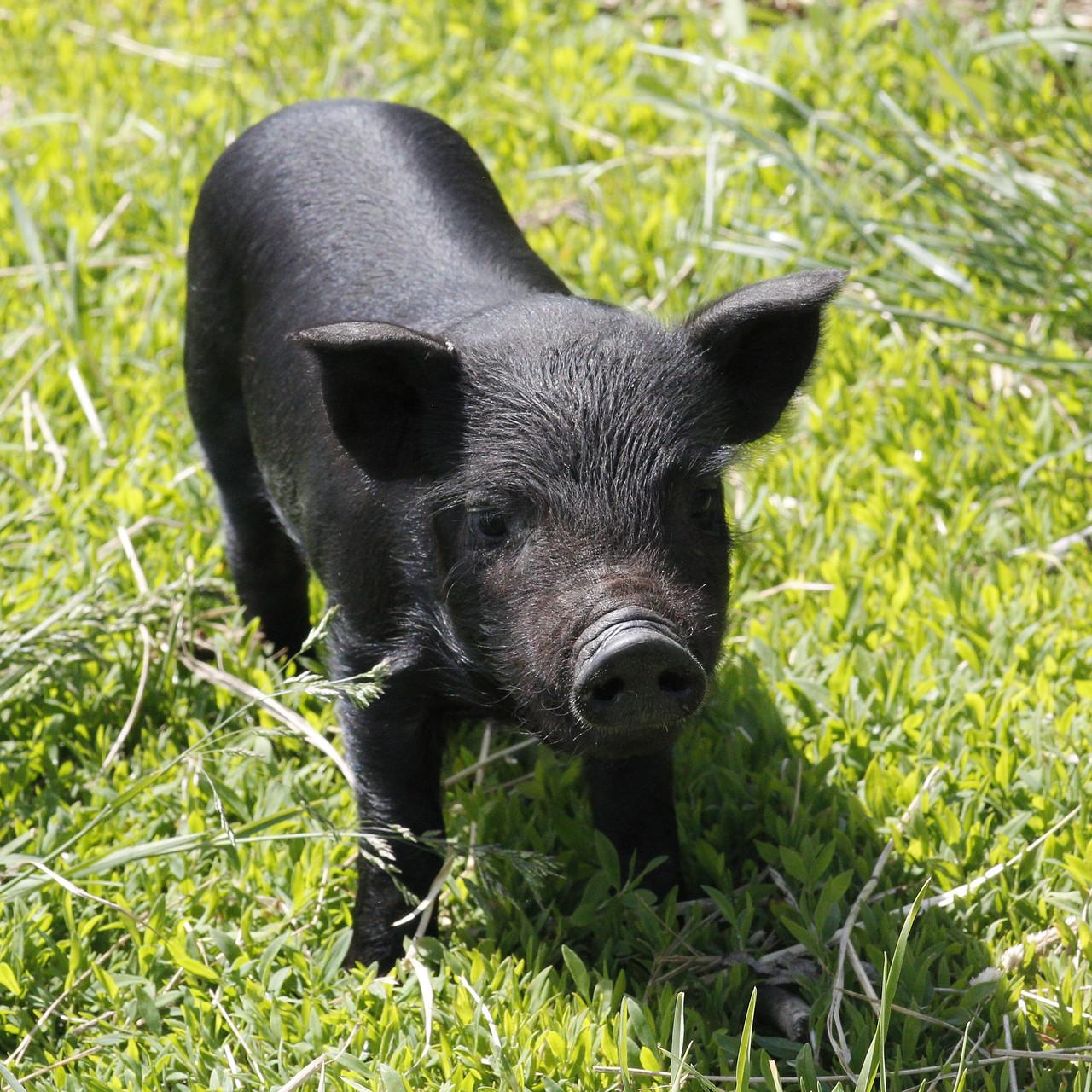We brought the American Guinea Hog to our farm about 6 years ago. At first they were too obese to have a litter. After we go through that problem we started having babies. Then we started to learn about marketing and finding customers. Some where in there we started working on the math of what we were producing. Turns out financially it does not make a lot of sense to be a breeder--at least the way we were doing it. We still learned a lot and did have tons of fun with them.

Some key things we learned were
- How to pasture rotate and supplement grass for their diet
- How to know when a sow is pregnant -- search on the internet for the "clit indicator"
- Fallowing in the field--we build drag-able shelters we could place over the mother once she gave birth
- Babies not under the shelter that are in the rain die
- After 1 week you probably know which babies will make it for the long run
- Sows eat babies that die---so you might have a larger litter then you know you did since the dead ones disappear fast
- Grain is really expensive
- American Guinea Hog's grow kind of slow and grain is expensive to maintain them
- Pigs love bales of hay in the winter and make a great way for them to stay warm and supplement their grain
- Hogs can eat brewers grain -- this is the greatest lesson that might have changed the numbers of the operation and made it work had we known this at the start -- you might be able to get it for free from a local brewery
- Boars grow tusks...if you have no way to restrain the boar you probably have no way to trim that
- If you want tasty meat you probably do not want to butcher your boar--there is something called boar taint and if it affects your meat or not is random chance...and since the boar is now dead its hard to breed against that trait
- Castrating boars should be done while they are still small enough to handle--preferably before they are weaned
- Boars can jump hog panel--one boar did it twice both times to get food--it was a big surprise
- If you have young children be careful about the boar...see above point about them jumping hog panels
- Hogs hold grudges--if you are trying to catch one, load one, do whatever and you miss the first time the next time will be multiple times harder because they know and remember
- Water nipples are a great sanitary way to water hogs
- Catch hogs by the hind feet when you need to handle one--you also want to only have to catch small ones they are strong
- Don't feed the hog with your hands like a pet...they are not a pet and probably will miss and bite your finger...don't ask how I know
- Hogs can be taught to eat black walnuts and it sounds like they are eating crunchy cereal -- teaching them takes a lot of time and patience you repeated hammer up nuts and mix it with their food

Characteristics Of American Guinea Hogs
- Black in color -- sometimes you see a pink or white snout or pink parts of feet
- Small compared to most breeds
- Able to live mainly on grass for a select few
- Good mothers, but always great at eating the dead
- Respectful of electric fence
- Smart and able to learn how rotating pastures work
- Not aggressive for the sows -- the boar you have to watch mainly they just all want food teach them to give you space and keep them feed and they do well
- In-breed there are a small number of source boars for the breed so when selecting genetics try to work out the in-breeding even as you by from other breeders check the family tree
- Easy to get way too fat
- Has lots of lard
- Pretty easy for one person to butcher by themself
- Finishing to a good size may take up to 2 years depending upon how much grass you are supplementing the grain with
American Guinea Hogs are lots of fun and work great for someone who wants a small animal the you can supplement feed with another source. Probably not as efficient on the grain and for sure slower growing then other breeds. They have a good personality though and are lots of fun.
